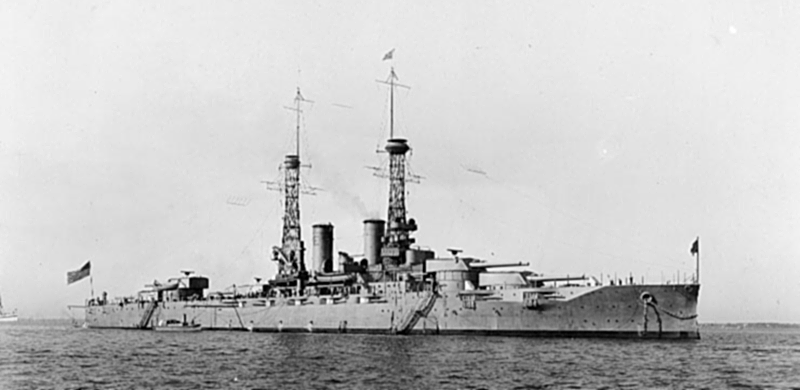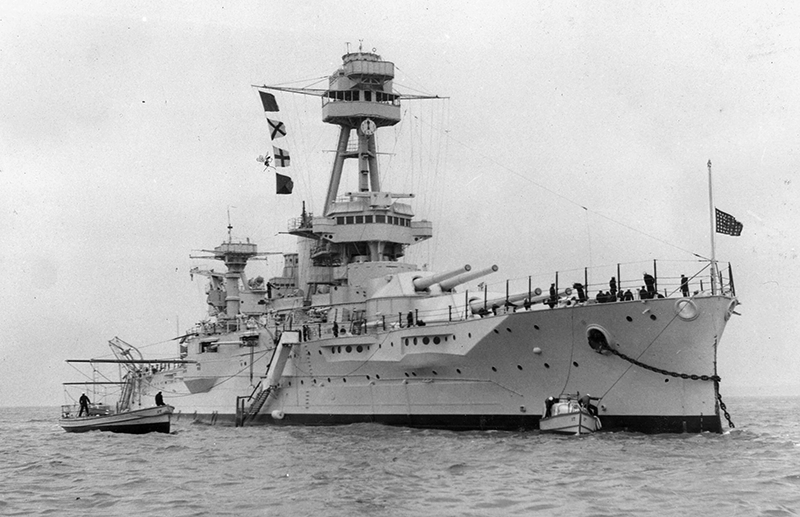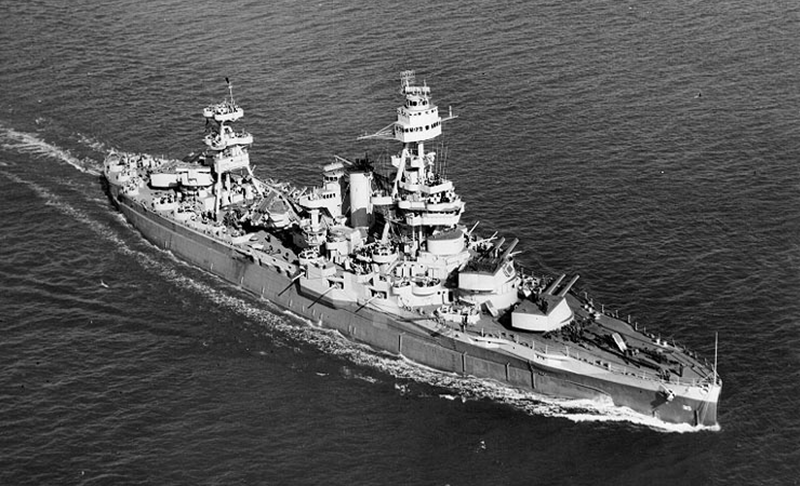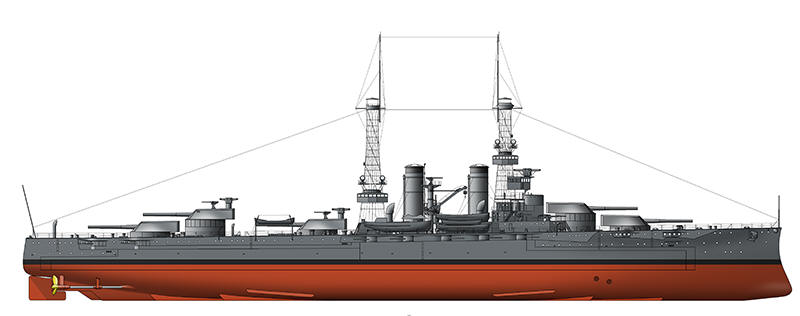
NAVYPEDIA
 Support the project with paypal
Support the project with paypal
Photo
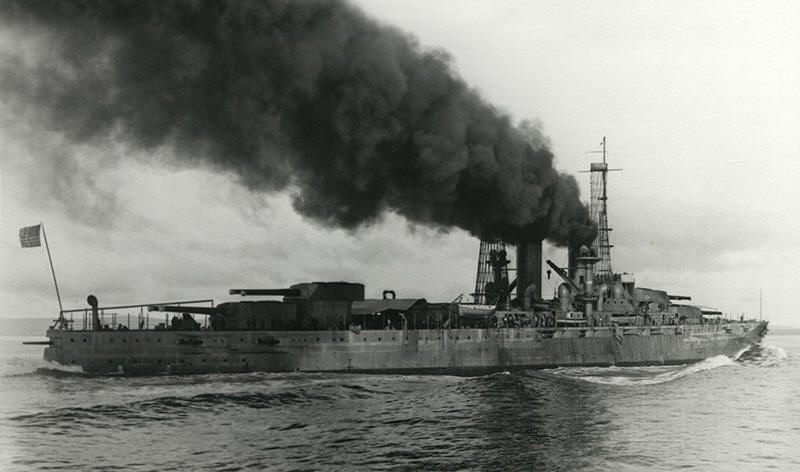
Texas on trials 1913
Ships
| No | Name | Yard No | Builder | Laid down | Launched | Comm | Fate |
|---|---|---|---|---|---|---|---|
| BB34 | New York | New York N Yd, Brooklyn | 11.9.1911 | 30.10.1912 | 15.4.1914 | sunk as target 8.7.1948 | |
| BB35 | Texas | 147 | Newport News | 17.4.1911 | 18.5.1912 | 12.3.1914 | stricken 4.1948, preserved |
Technical data
| Data variant | as commissioned | 1927 modernization |
|---|---|---|
| Displacement standard, t | --- | 27000 |
| Displacement normal, t | 27000 |
|
| Displacement full, t | 28367 |
31924 |
| Length, m | 172.3 wl 174.7 oa |
172.2 wl 174.7 oa |
| Breadth, m | 29.1 |
32.3 |
| Draught, m | 8.70 |
9.19 full load |
| No of shafts | 2 |
2 |
| Machinery | 2 VTE, 14 Babcock & Wilcox boilers |
2 VTE, 6 Bureau Express boilers |
| Power, h. p. | 28100 |
28100 |
| Max speed, kts | 21 |
21 |
| Fuel, t | coal 2850 + oil 400 |
oil 2810 (4600 max) |
| Endurance, nm(kts) | 7684(12) | 15400(10) |
| Armour, mm | belt: 305 - 254, upper belt: 280 - 229, casemate: 165, deck: 51, barbettes: 305 / 254, turrets: 356 (face), CT: 305 |
belt: 305 - 254, deck: 88 - 114, barbettes: 305 - 127, turrets: 356 (face), CT: 305 |
| Armament | 5 x 2 - 356/45 Mk I, 21 x 1 - 127/51 Mk VIII, 4 - 533 TT (beam) |
5 x 2 - 356/45 Mk 8, 16 x 1 - 127/51 Mk 7.8, 8 x 1 - 76/52 Mk10/18, 8 x 1 - 12.7/90, 1 catapult, 3 seaplanes (UO) |
| Complement | 1042 |
1290 |
Standard scale images
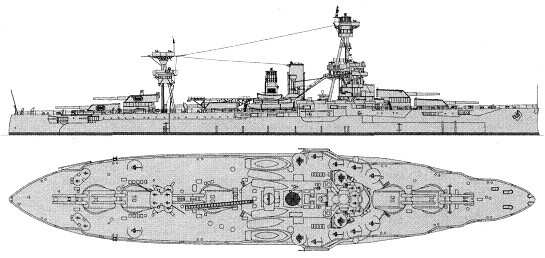
New York 1942
Graphics
Project history
1911 program ships, originally planned to be armed with 5 triple 305mm turrets but later, when 343mm guns appeared in the Royal Navy, redesign for heavier guns. This was the 10x356mm design which had originally been developed in 1908-9 as an alternative to Wyoming. The prototype 356mm/45 gun was test-fired in January 1910, and this design approved in March. Plans for two-shaft (Curtis) and four-shaft (Parsons) turbine installations were developed, but trials of North Dakota appeared to show that turbines were generally unsatisfactory: it was estimated that the new ship would be able to make only about 5605nm at 12kts on turbines, compared to 7060 with reciprocating engines. The former figure would be insufficient to take the ship from the US West Coast to the Philippines. The General Board therefore chosen reciprocating engines, even though it was aware that they had no great potential for further development.
Ship protection
Main 122m-long belt had 2.44m height (1.3m over and 1.14m under waterline) abreast citadel and was 305mm thick at upper part tapering to 254mm at lower edge. Belt was connected with end barbettes by 254mm fore and 280mm aft bulkheads. There was narrow 229mm belt between barbette No5 and stern. There was upper belt, 280mm at lower and 229mm at upper edges, it was closed by 280/229mm bulkheads. Casemate had 165mm armour and connected with barbettes No2 and 3 by diagonal 165mm bulkheads. Funnel uptakes had 165mm protection. Flat armoured deck connected with upper edge of main belt and was 51mm over boilers and 76mm over magazines. Main deck over turbines (between No3 and 4 barbettes) was unarmoured. This deck had 38mm thickness from citadel to the stem. It was 51mm aft from citadel and was strengthened over steering gear up to 76mm with 76mm slopes. Battery deck was connected with upper edge of upper belt and was 25mm between No2 and 5 barbettes, increasing to 44mm under casemate. Main gun turrets had 305mm faces, 203mm sides and rears and 102mm crowns. Barbettes were 305mm at upper and 127mm at lower edges. CT had 102mm roof. Underwater protection was 7.1m deep. There was 38mm longitudinal bulkhead.
Ship protection after modernization: Main 122m-long belt had 2.44m height (1.3m over and 1.14m under waterline) abreast citadel and was 305mm thick at upper part tapering to 254mm at lower edge. Belt was connected with end barbettes by 254mm fore and 280mm aft bulkheads. There was narrow 229mm belt between barbette No5 and stern. There was upper belt, 280mm at lower and 229mm at upper edges, it was closed by 280/229mm bulkheads. Casemate had 165mm armour and connected with barbettes No2 and 3 by diagonal 165mm bulkheads. Funnel uptakes had 165mm protection. Old flat armoured deck (now splinter deck) connected with upper edge of main belt and was 51mm over boilers and 76mm over magazines. Main deck over turbines (between No3 and 4 barbettes) was unarmoured. This deck had 38mm thickness from citadel to stem. It was 51mm aft from citadel and was strengthened over steering gear up to 120mm with 76mm slopes. New main deck (old battery deck) was connected with upper edge of upper belt and was 114mm over magazines and turbines and 132mm over boilers. Main gun turrets had 305mm faces, 203mm sides and rears and 146mm crowns. Barbettes were 305mm at upper and 127mm at lower edges. CT had 146mm roof. Underwater protection was 9.2m deep. There was 38mm longitudinal bulkhead.
Modernizations
1916, both: + 2 x 1 - 76/52 Mk X
1918, both: + 4 x 1 - 76/52 Mk X
3/1918, Texas: + 1 airplane (temporarily for trials)
1919, both: + 2 x 1 - 76/52 Mk X
early 1920, both: - 5 x 1 - 127/51
(1927, Norfolk NYd) New York; (1925 - 1927, Norfolk NYd) Texas: were modernized as follows. New bulges and boilers were fitted, horizontal armour was strengthened, part of secondary guns was moved one deck up.
12/1938, Texas: + XAF radar
1/1939, New York: + CXZ radar
early 1941, both: maximal angle of main guns elevation was increased up to 30°.
mid-1941, both: - 6 x 1 - 127/51; + 2 x 1 - 76/50 Mk 20, 4 x 4 - 28/75 Mk 1
early 1942, Texas: - XAF radar; + SG, SK, FC (Mk 3) radars
early 1942, New York: - CXZ radar; + SG, SK, FC (Mk 3) radars
8/1942, both: - 10 x 1 - 127/51; + 4 x 4 - 28/75 Mk 1, 42 x 1 - 20/70 Mk 4
1943, both: - 4 x 4 - 28/75; + 4 x 4 - 40/56 Mk 1.2
1944, both: - 4 x 4 - 28/75; + 4 x 4 - 40/56 Mk 1.2
autumn 1944, both: + 2 x 4 - 40/56 Mk 1.2, 1 x 2 - 20/70 Mk 4, 2 x 1 - 20/70 Mk 4, 2x Mk 19 radars
1/1946, BB34 New York, BB35 Texas: 5 x 2 - 356/45 Mk 8, 10 x 1 - 76/50 Mk 11, 10 x 4 - 40/60 Mk 2, 1 x 2 - 20/70 Mk 24, 44 x 1 - 20/70 Mk 10, 8 x 1 - 12.7/90, 1 catapult, 3 seaplanes, SG, SK, FC (Mk 3), 2x Mk 19 radars
Naval service
Texas flew off her first airplane at Guantanamo Bay (Cuba) in March 1919. Both ships served with 6th Battle Squadron, Grand Fleet, during World War One.
During support of Normandy landing Texas 26.6.1944 received some hits of 280- and 240mm shells from German coast batteries and was 1 month under repair. New York was sunk as target during nuclear tests off Bikini.
 HOME
HOME FIGHTING SHIPS OF THE WORLD
FIGHTING SHIPS OF THE WORLD UNITED STATES OF AMERICA
UNITED STATES OF AMERICA CAPITAL SHIPS AND MONITORS
CAPITAL SHIPS AND MONITORS NEW YORK battleships (1914)
NEW YORK battleships (1914)
